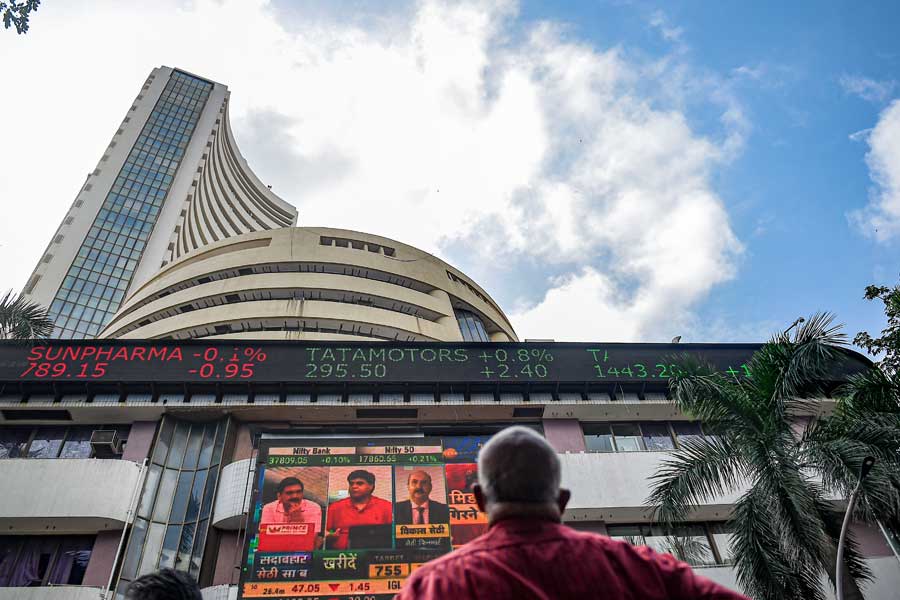Involuntary unemployment arises not because of any shortcoming on the part of the unemployed but because of a failure of the social arrangement within which we live. This is why societies feel obliged to devise schemes to assist the unemployed, from unemployment allowance in the northern countries to our own Mahatma Gandhi National Rural Employment Guarantee Scheme. All such schemes, however, are conceptually half-hearted: they recognise unemployment as a social failure and, yet, involve some degree of personal penalisation of the unemployed.
Unemployment allowance in the north is only a fraction of the average wage; and MGNREGS in India offers a statutory minimum wage against manual labour for a maximum of one hundred days to only one person in a family, that too only in rural India. Societies adopting such schemes accept responsibility for unemployment, but do not accept full responsibility. It is only the Soviet Union and eastern European socialist societies that had achieved full employment, even a state of labour shortage; but with their collapse, unemployment is now a generalised phenomenon as is the half-hearted acceptance of social responsibility for it.
Such half-hearted acceptance of social responsibility makes these schemes appear as largesse on the part of the State, as charitable acts on the part of this or that benevolent government or leader. Notwithstanding the fact that they are supposed to be demand-driven — that is, the benefits they confer are supposed to accrue to everyone who is eligible for them — they are turned on and off depending upon the fiscal situation; at least this is so with the MGNREGS in India where all kinds of ruse are used to keep the number of beneficiaries as low as possible. In fact, the latest government decree confining beneficiaries only to those who have an Aadhaar link is an example of this. Even the half-hearted acceptance of social responsibility for the phenomenon of unemployment is thus further whittled down, at least in India.
A society that fully accepts responsibility for the phenomenon of involuntary unemployment, that fully accepts, in other words, the proposition that unemployment is not the fault of the person who is unemployed but of the social arrangement within which that person lives, should compensate such a person fully by paying him or her a statutorily fixed living wage appropriate to that person’s skill and training if it cannot provide work. Since governments would generally be reluctant to institute such an arrangement, and even if perchance it does get instituted, there will always be an attempt to scuttle it or reduce the scope of its coverage under one pretext or another owing to the fiscal claims such a scheme would make, it is best if it is written into the Constitution as a fundamental economic right. The right to employment, failing which the person involuntarily unemployed has a right to a full, statutorily-fixed wage, should constitute in short a universal, justiciable, constitutionally-guaranteed fundamental economic right.
A misconception may arise here. It may be thought that the payment of full wages to all involuntarily unemployed persons would take away resources from productive investment and would therefore lower the output and, hence, employment, growth-rate of the economy, because of which the number of unemployed beneficiaries would keep climbing over time. This is untrue: our economic system, and capitalism in general, is a demand-constrained system where a rise in aggregate demand increases output and, hence, capacity utilisation, thereby increasing, rather than decreasing, investment and the growth-rate of output and employment; and payment of a wage to the involuntarily-unemployed boosts aggregate demand. In fact, the boost may be so sudden and large that it encounters scarcity in particular sectors causing inflation; but this problem can be managed by a judicious direction of investment to potential bottleneck sectors and an appropriate staggering of the implementation of the right to employment.
Our economic system being a demand-constrained one implies that the financial resources required for paying wages to the unemployed will actually be only a fraction of what is obtained by simply multiplying the number of persons unemployed by the wage rate; this is because the very spending of the wages paid to some will create demand for goods and services and jobs for others so that the numbers to whom payment will have to be made would be much lower than appears at first sight.
The financial resources for introducing such a constitutional right can be easily raised. Introducing five fundamental economic rights (a right to food, a right to free, publicly-funded healthcare through a National Health Service, a right to free, publicly-funded quality education, a right to employment, and a right to an adequate, non-contributory old-age pension and disability benefit) would cost no more than 10% of the GDP in addition to what is currently being spent on these heads (details of the estimate are available in P. Patnaik and J. Ghosh in Nikhil Dey et al. edited, We the People). This amount can be raised by just two taxes levied on the top 1% of the population: a 2% wealth tax and a 33% inheritance tax. The implementation of the right to employment alone is estimated to cost 3% of the GDP. This can be easily funded.
Implementing such a right would no doubt arouse opposition from globalised finance capital and the domestic rich; it also needs to be carefully planned to prevent misuse. But it is time we redeemed our pledge to build a welfare State.
Prabhat Patnaik is Professor Emeritus, Centre for Economic Studies, Jawaharlal Nehru University, New Delhi










